Art World
Conservators Discover Missing Piece of Legendary René Magritte Canvas
The last piece of the puzzle remains at large.
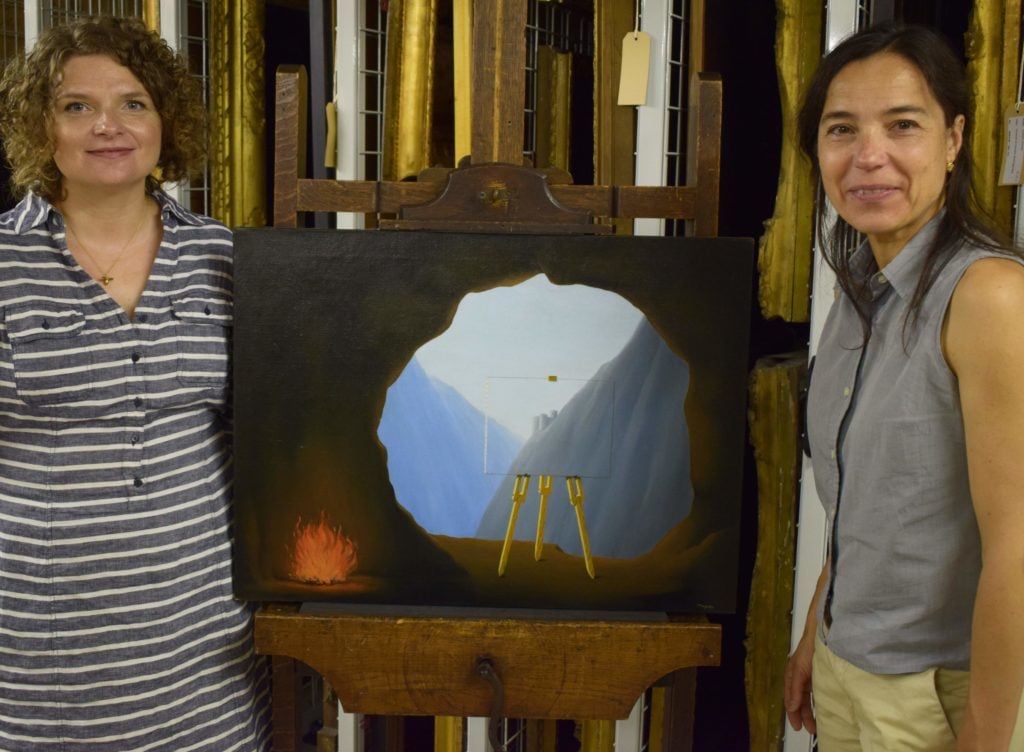
The last piece of the puzzle remains at large.

Brian Boucher

Curators at Norwich Castle Museum and Art Gallery, about 100 miles northeast of London, have discovered that underlying René Magritte‘s 1935 painting La Condition Humaine (The Human Condition) is one quarter of La Pose Enchantée (The Enchanted Pose), a 1927 painting.
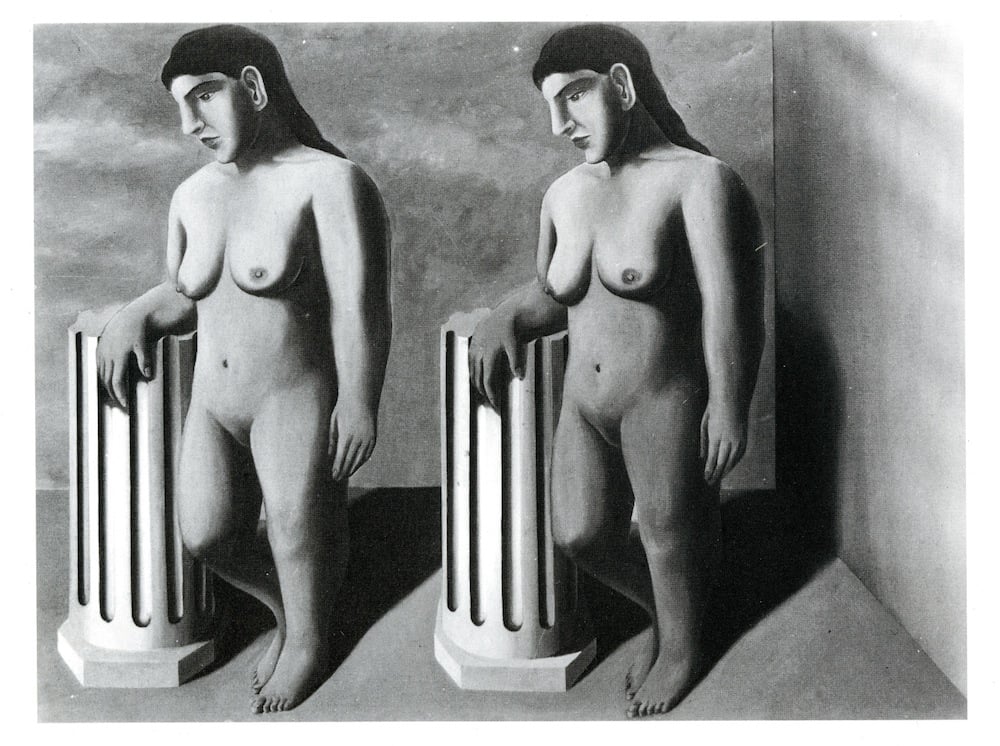
René Magritte, La Pose Enchantée (The Enchanted Pose), 1927. Destroyed.
For unknown reasons, the Belgian Surrealist cut the 1927 canvas into quarters and painted other works on the pieces. The Magritte catalogue raisonné lists the work’s whereabouts as unknown; it is familiar only from a black-and-white photograph. The lost canvas showed two identical female nudes, side by side, each with one arm resting on a broken, fluted column.
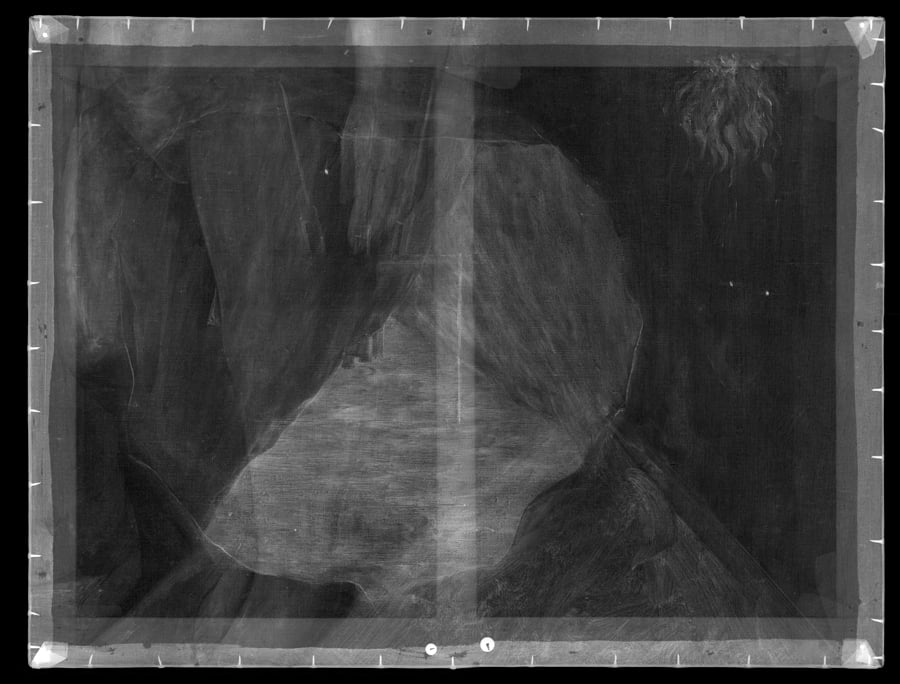
Upside-down x-ray of Norwich Museum Services’s La Condition Humaine, showing, on the left, the legs and hand of a woman and the base of a column. © Hamilton Kerr Institute, courtesy Norwich Museums Service.
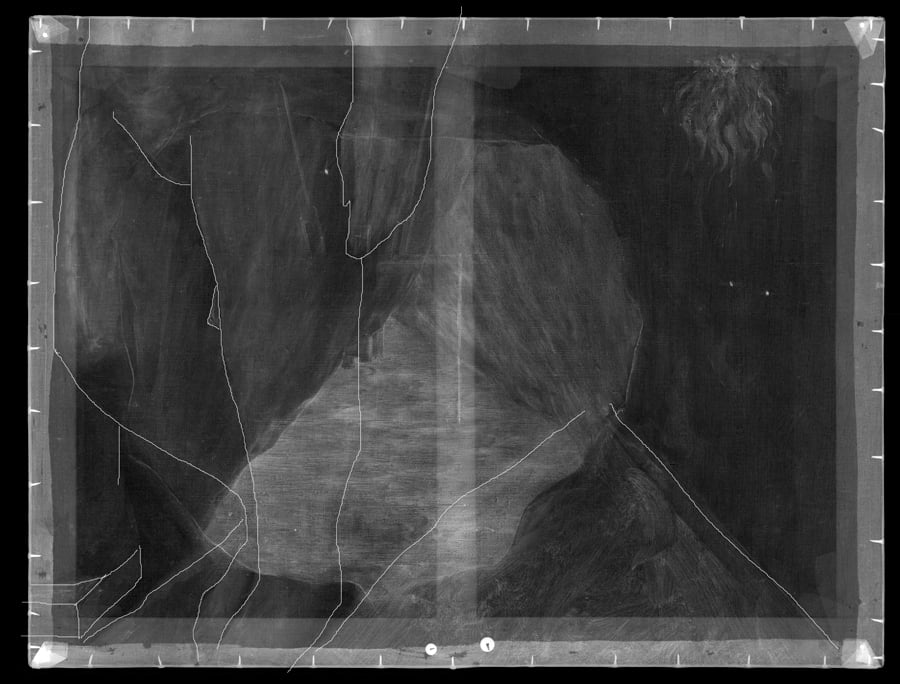
The X ray with superimposed drawing, highlighting the contours of La Pose Enchantée in the underpainting. © Hamilton Kerr Institute, courtesy Norwich Museums Service.
The mystery first emerged when staffers at New York’s Museum of Modern Art discovered, in preparation for a 2013 exhibition, that one of the museum’s own Magritte canvases harbored a painting underneath the surface.
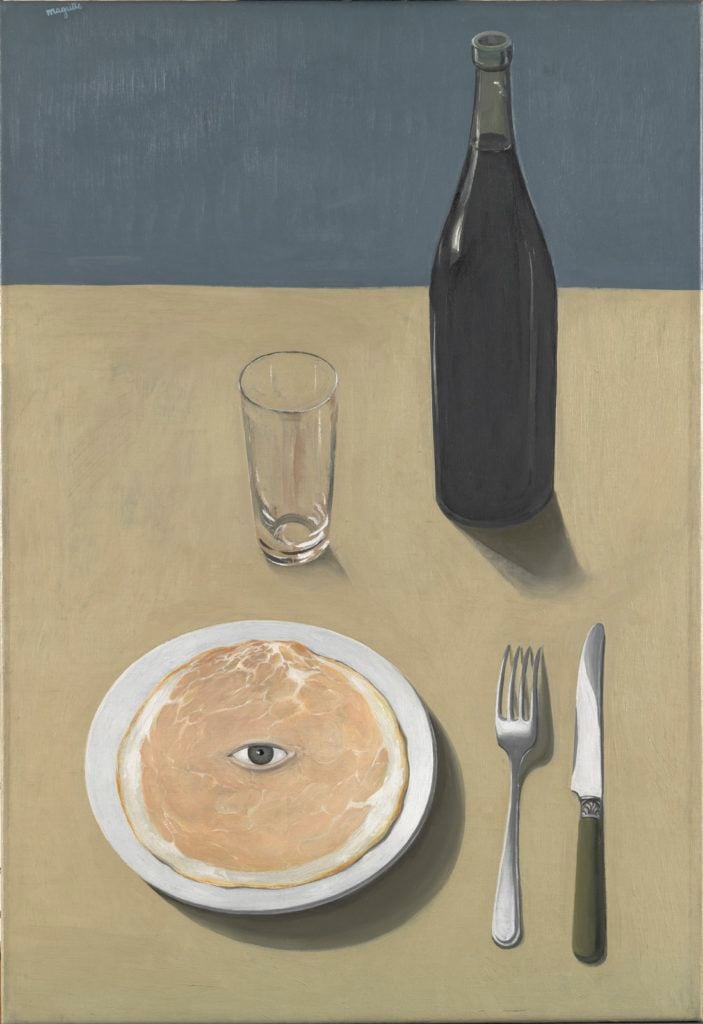
René Magritte, The Portrait, 1935. Museum of Modern Art, New York © ARS, New York
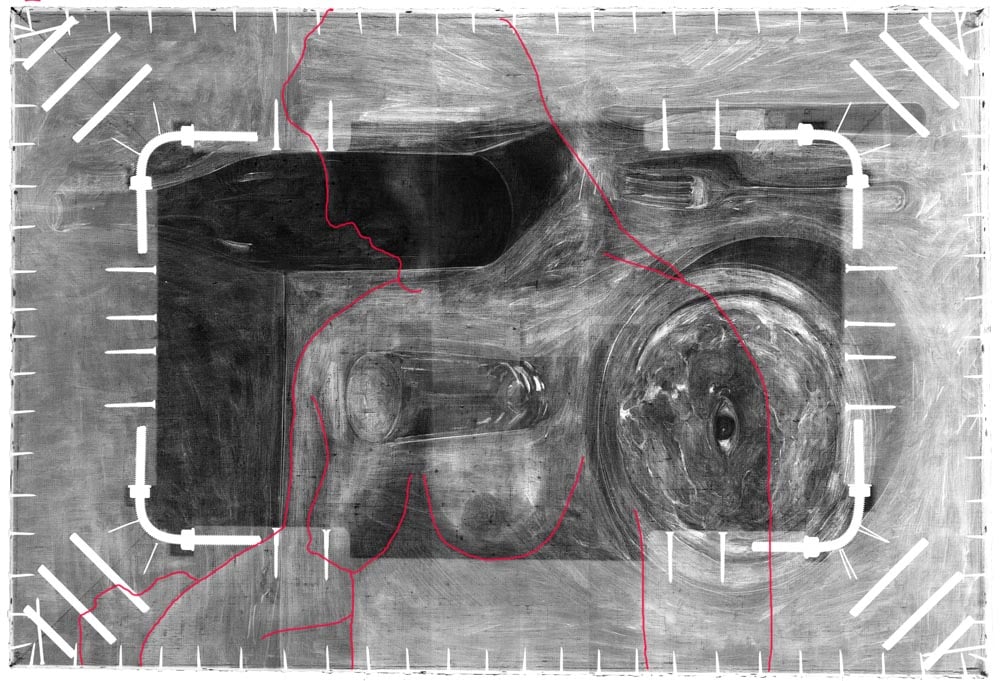
X-ray image of René Magritte, Le Portrait (The Portrait) (1935). Outline of part of Magritte, La Pose enchantée (The Enchanted Pose), 1927. Conservation department, Museum of Modern Art, New York. © Charly Herscovici-ADAGP-ARS, 2013.
A conservator at the Menil Collection, in Houston, Texas, a co-organizer of the show, quickly identified the underpainting, visible in X rays, as a fragment of The Enchanted Pose.
“Our painting La Condition Humaine has in fact been successfully hiding part of La Pose Enchantée for more than 80 years,” Norwich Castle curator Giorgia Bottinelli said in a press release.

René Magritte, The Red Model 1935. Moderna Museet, Stockholm. © ADAGP, Paris
The Norwich painting is the third piece of the puzzle that has been located; the MoMA and Menil curators and conservators had determined that The Red Model (1935), from Stockholm’s Moderna Museet, was also painted on a piece of La Pose Enchantée. The initial clues were the paintings’ matching sizes and the fact that the sides of the canvases along the wooden stretchers had paint on them, unusually for Magritte, suggesting that the canvas had been previously painted.
“All we need to discover now is where the fourth and final, upper-right-hand quarter is,” says Bottinelli. “Then this exciting art world jigsaw puzzle will be complete.”